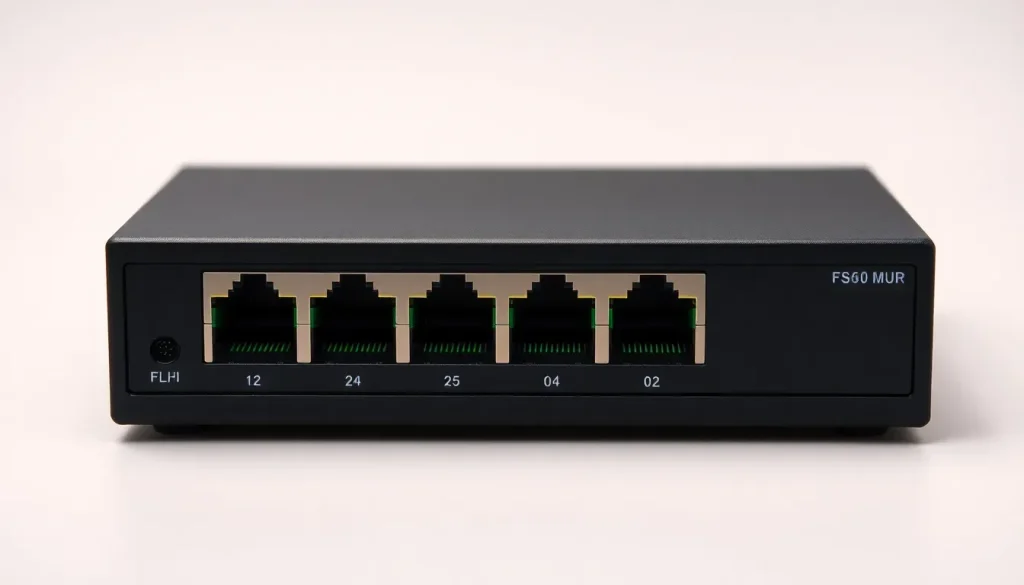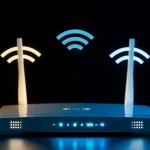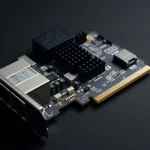I love this affordable $13 Ethernet switch and bought 3

In the era of smart homes and high-definition entertainment, the importance of a reliable internet connection cannot be overstated. While we often think of wireless technologies like Wi-Fi and Bluetooth, many smart devices significantly benefit from a stable wired connection. This is where ethernet switches come into play, providing an easy solution to expand your connectivity options. Let's explore the nuances of ethernet switches, their benefits, and why investing in a good one can revolutionize your digital experience.
What is an ethernet switch and how does it work?
An ethernet switch is a device that connects multiple devices within a local area network (LAN). It uses MAC addresses to forward data only to the intended devices, enhancing network efficiency compared to simpler devices like hubs. Here’s a quick overview of its functionality:
- Data Handling: Ethernet switches process and transmit data packets effectively to reduce network congestion.
- Port Availability: They increase the number of available ethernet ports, allowing you to connect more devices.
- Unmanaged vs. Managed Switches: Unmanaged switches require no configuration, while managed switches offer advanced features like traffic management and network monitoring.
When you connect an ethernet switch to your router, it allows you to daisy-chain multiple switches, easily expanding your network to accommodate more devices.
Benefits of using an ethernet switch
Investing in an ethernet switch can significantly enhance your home or office network. Here are some key benefits:
- Improved Reliability: Wired connections generally provide more stable and faster speeds compared to wireless connections.
- Reduced Latency: For gaming or streaming, a wired connection minimizes lag and interruptions.
- Better Security: Wired networks are less susceptible to hacking compared to wireless networks.
- Cost-Effectiveness: Ethernet switches are relatively inexpensive, providing a simple way to expand your network without major investments.
Why choose a budget ethernet switch?
Many consumers hesitate to invest in networking equipment, but budget-friendly options can offer impressive performance. For instance, the TP-Link unmanaged 5-port gigabit ethernet switch is often priced around $13, making it an excellent choice for those looking to enhance their network without breaking the bank. Here’s why a budget switch can be worthwhile:
- Affordability: Low-cost switches provide essential functions for home users without unnecessary complexity.
- Ease of Use: Unmanaged switches are plug-and-play, making setup quick and hassle-free.
- Scalability: You can easily add multiple switches as needed, growing your network incrementally.
Potential downsides of ethernet switches
While there are many advantages to using ethernet switches, it's important to be aware of potential downsides:
- Limited Features: Budget switches may lack advanced features found in managed switches, such as VLAN support or traffic prioritization.
- Dependence on Wiring: A wired setup can be less flexible than a wireless one, requiring additional cabling and careful placement of devices.
- Power Requirements: Some switches need power outlets, which may limit their placement options.
Real-world applications of ethernet switches in smart homes
In a modern smart home, the number of internet-connected devices can quickly add up. Many devices benefit from wired connections for optimal performance. Here are some real-world applications of ethernet switches:
- Smart Hubs: Devices like the Philips Hue Bridge require ethernet for better reliability and speed.
- Gaming Consoles: Connecting your PlayStation or Xbox via ethernet can enhance your gaming experience by reducing latency.
- Media Servers: Devices like the HDHomeRun TV tuner work more effectively when connected directly to a switch.
- Home Automation: Raspberry Pi systems that run multiple applications, such as Home Assistant or Plex, benefit from stable ethernet connections.
For instance, having a TP-Link switch connected under your desk can seamlessly connect your PC, smart hub, and various media devices, ensuring that each one functions optimally without interference.
How to set up an ethernet switch
Setting up an ethernet switch is straightforward, particularly for unmanaged switches. Here’s how to do it:
- Connect the link port of the ethernet switch to a nearby router or mesh hub using an ethernet cable.
- Plug in the devices you want to connect to the available ports on the switch.
- Ensure the switch is powered on using the supplied AC adapter.
- Verify that each connected device has internet access.
This simple process allows you to enhance your network quickly and efficiently without technical expertise.
Conclusion
For anyone looking to optimize their home or office networking, investing in an ethernet switch can be a game changer. The affordable price point combined with the significant benefits of improved speed, reliability, and security makes these devices well worth the investment. Whether you’re a gamer, a media enthusiast, or simply looking to connect more devices, an ethernet switch can help you achieve a seamless and efficient network.
To further enhance your understanding, here's a video that explains the basics of ethernet switches and how they can benefit your home network:
With the right equipment, you're not just connecting devices—you're building a robust networking solution that can grow and adapt to your needs.




Leave a Reply